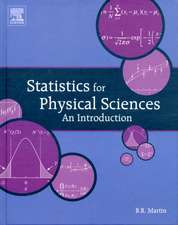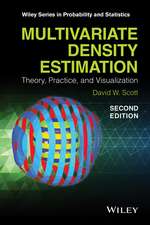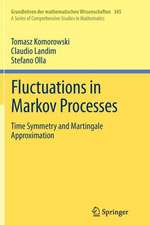Stability and Perfection of Nash Equilibria
Autor Eric van Dammeen Limba Engleză Paperback – 25 iul 1991
Preț: 699.93 lei
Preț vechi: 823.44 lei
-15% Nou
Puncte Express: 1050
Preț estimativ în valută:
133.93€ • 140.21$ • 110.82£
133.93€ • 140.21$ • 110.82£
Carte tipărită la comandă
Livrare economică 07-21 aprilie
Preluare comenzi: 021 569.72.76
Specificații
ISBN-13: 9783540538004
ISBN-10: 3540538003
Pagini: 360
Ilustrații: XIX, 339 p.
Dimensiuni: 155 x 235 x 19 mm
Greutate: 0.5 kg
Ediția:2nd rev. and enlarged ed. 1991
Editura: Springer Berlin, Heidelberg
Colecția Springer
Locul publicării:Berlin, Heidelberg, Germany
ISBN-10: 3540538003
Pagini: 360
Ilustrații: XIX, 339 p.
Dimensiuni: 155 x 235 x 19 mm
Greutate: 0.5 kg
Ediția:2nd rev. and enlarged ed. 1991
Editura: Springer Berlin, Heidelberg
Colecția Springer
Locul publicării:Berlin, Heidelberg, Germany
Public țintă
ResearchCuprins
1 Introduction.- 1.1 Informal Description of Games and Game Theory.- 1.2 Dynamic Programming.- 1.3 Subgame Perfect Equilibria.- 1.4 Sequential Equilibria and Perfect Equilibria.- 1.5 Perfect, Proper and Persistent Equilibria.- 1.6 Essential Equilibria and Regular Equilibria.- Notes.- 2 Games in Normal Form.- 2.1 Preliminaries.- 2.2 Perfect Equilibria.- 2.3 Proper Equilibria.- 2.4 Essential Equilibria.- 2.5 Regular Equilibria.- 2.6 An “Almost all” Theorem.- Notes.- 3 Matrix and Bimatrix Games.- 3.1 Preliminaries.- 3.2 Perfect Equilibria.- 3.3 Regular Equilibria.- 3.4 Characterizations of Regular Equilibria.- 3.5 Matrix Games.- Notes.- 4 Control Costs.- 4.1 Introduction.- 4.2 Games with Control Costs.- 4.3 Approachable Equilibria.- 4.4 Proper Equilibria.- 4.5 Perfect Equilibria.- 4.6 Regular Equilibria.- Notes.- 5 Incomplete Information.- 5.1 Introduction.- 5.2 Disturbed Games.- 5.3 Firm Equilibria.- 5.4 Perfect Equilibria.- 5.5 Weakly Proper Equilibria.- 5.6 Strictly Proper Equilibria and Regular Equilibria.- 5.7 Proofs of the Theorems of Sect. 5.5.- Notes.- 6 Extensive Form Games.- 6.1 Definitions.- 6.2 Equilibria and Subgame Perfectness.- 6.3 Sequential Equilibria.- 6.4 Perfect Equilibria.- 6.5 Proper Equilibria.- 6.6 Control Costs.- 6.7 Incomplete Information.- Notes.- 7 Bargaining and Fair Division.- 7.1 Introduction.- 7.2 Divide and Choose.- 7.3 Auction Methods.- 7.4 Bargaining Problems and Bargaining Solutions.- 7.5 The Nash Negotiation Game.- 7.6 The Rubinstein/Binmore Model.- 7.7 The Crawford/Moulin Model.- 7.8 Bargaining Games with Variable Threat Point.- Notes.- 8 Repeated Games.- 8.1 Introduction.- 8.2 Preliminaries.- 8.3 Infinitely Repeated Games Without Discounting.- 8.4 Infinitely Repeated Games with Discounting: Nash Equilibria.- 8.5 InfinitelyRepeated Games with Discounting: Subgame Perfect Equilibria.- 8.6 Finitely Repeated Games: Nash Equilibria.- 8.7 Finitely Repeated Games: Subgame Perfect Equilibria.- 8.8 Renegotiation-Proof Equilibria.- Notes.- 9 Evolutionary Game Theory.- 9.1 Introduction.- 9.2 Evolutionarily Stable Strategies.- 9.3 Strategic Stability of ESS.- 9.4 Population Dynamics.- 9.5 Asymmetric Contests: Examples and the Model.- 9.6 Asymmetric Contests: Results.- 9.7 Contests in Extensive Form: Definitions.- 9.8 Contests in Extensive Form: Results.- Notes.- 10 Strategic Stability and Applications.- 10.1 Equivalence of Games.- 10.2 Requirements for Strategic Stability.- 10.3 Stable Equilibria.- 10.4 Signalling Games: Introduction.- 10.5 Signalling Games: Dominance, Intuitive Arguments and Stability.- 10.6 Spence’s Job Market Signalling Model.- 10.7 The Chain Store Paradox.- 10.8 Repeated Games.- Notes.- References.- Survey Diagrams.

















